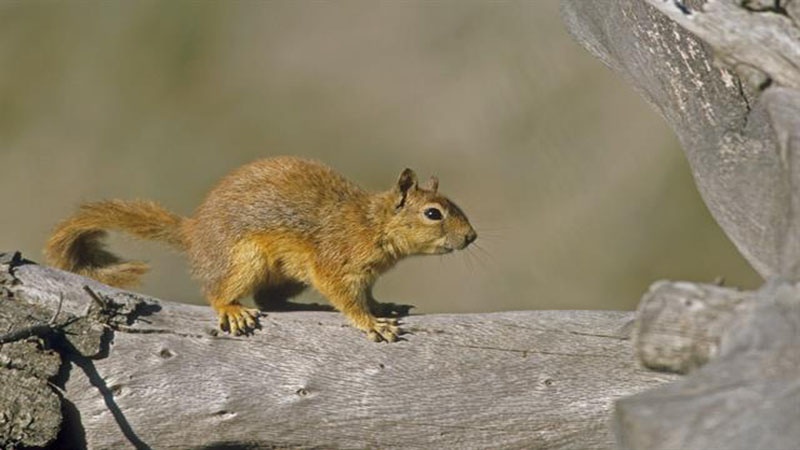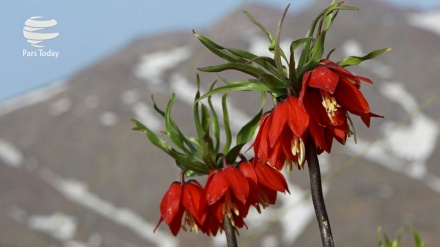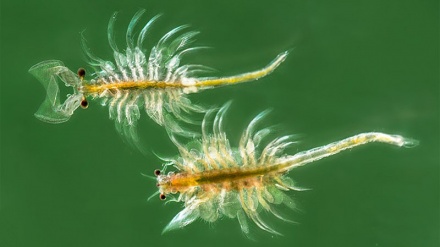Iran’s rare animal and plant species (10)
Welcome to this week’s episode of the series Iran’s Rare Animal and Plant Species.
Iran is the habitat of one of the most beautiful squirrel types in the world. However, unfortunately, this animal which maintains unique movements and has a long, pretty tail, is on the verge of extinction, given that it is has been widely targeted by smugglers and poachers. Today, we become more familiar with this attractive animal.
Persian squirrel is an animal that lives in the forested regions of Caucasus, Anatoly, Zagros, and Eastern Mediterranean. In Iran, the main habitats of this animal are the forested regions of Zagros in West Iran, especially oak forests in West Azarbaijan Province. Persian squirrel lives among the tall and old oak trees and mainly feeds on oak tree acorn nuts. Persian squirrel gathers these fruits, hiding them within the cracks of rocks and amid hollow bushes, especially underneath soil, in a bid to feed on them throughout winters, in which oak tree acorn nuts are nowhere to be found. However, given that Persian squirrels are forgetful, they do not find all of these fruits; some of the seeds of which flourish in the spring season, shaping new trees. Hence, squirrels highly contribute to expansion and revival of oak forests in western Iran.
Persian squirrels maintain an average body, with a length varying from 20-25 centimeters. Its back hair is brownish gray and it’s underneath hair is yellowish in color. Persian squirrel’s red head and tail distinguishes this mammal from other existing squirrels in Iran. Moving toward southern Zagros forests; Persian Squirrel’s tail hair color changes into orange to pale yellow. Persian squirrel ears are small and protruded and a number of long hairs are observed in their beaks. Persian squirrels maintain four claws and five paws.
Persian squirrels’ beautiful tails help them amid threats. Upon sensing a threat, they immediately climb trees with their long and sharp claws and jump from one branch to another one with the usage of their long tails. Their tails help them to maintain their balance, while leaping from one branch to the other. Squirrels also use their tails as pillows while sleeping, which in turn helps them to maintain their body heat. Squirrels’ tails are a means of communication among them. They communicate with each other upon moving and shaking their tails.
Squirrels do not build nests, and usually use holes and cavities inside trees as nests. Upon selection of holes and cavities, squirrels cover the surface of these cavities with soft weeds, resting within them upon nightfall. The interesting point is that although squirrels live on their own; they invite other squirrels to their nests in freezing cold in order to maintain their body temperature and to heat up their nest; with other squirrels leaving the related nest as the temperatures rise.
Squirrels are active throughout the day, and usually live individually. Persian squirrels are not interested as such in bathing but are skilled swimmers. In summertime, main activities of the squirrel take place up to roughly two or three hours after sunrise and they rest in their nests in the afternoon, while rarely leaving their nests upon nightfall. Persian squirrels’ mating season is as of late winter until early spring, and their pregnancy lasts thirty days. Their offspring is hairless and close-eyed, reaching puberty at the age of one, and maintaining a lifespan of twelve years.
Squirrels are mainly smuggled to be sold as pets, which has in turn endangered this animal. Moreover, many of the smuggled squirrels die amid inappropriate transportation, which has generated major concerns. Also, despite all the measures that have been taken by rangers and environmentalists to protect this animal, another factor which has pushed this animal toward the verge of distinction is the destruction of its habitats in Iran. The settlement of nomads and villagers in these forested regions has led them to cut oak tree branches to feed their livestock; thereby drying oak trees, and wiping out the main feeding sources of these squirrels, pushing these animals toward the verge of extinction.
MR/SS



